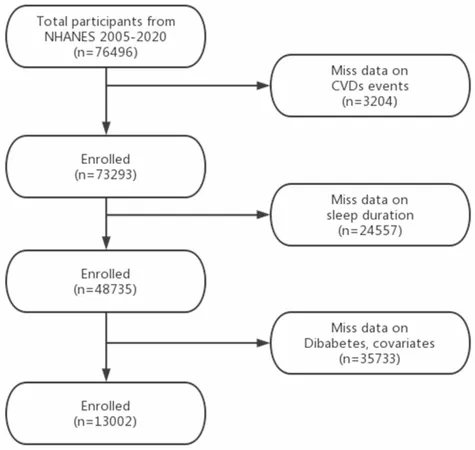
Breakthrough Study Reveals Potential Biomarkers for Psychiatric Disorders!
2024-09-25
Researchers from Yale University have made significant strides towards identifying biomarkers for psychiatric illnesses, a discovery that could revolutionize mental health diagnostics. The challenge lies in the inherently complex nature of brain activity, which is often measured using functional magnetic resonance imaging (fMRI). This complexity can make it difficult to find consistent activity patterns that are observable across various individuals.
In an innovative new study published on September 24 in the journal PLOS Biology, the Yale team dramatically simplified fMRI data, revealing shared patterns of brain activity among over 300 participants. This vital research could lead to a breakthrough in understanding and diagnosing mental health issues.
"Human brain activity is exceptionally intricate, making it often unreliable, particularly when aiming for consistent results," explained Kangjoo Lee, the study's lead author and an associate research scientist in Psychiatry at Yale School of Medicine. "Our goal was to identify brain activity features that are connected to specific human behaviors and remain consistent across individuals."
The researchers analyzed fMRI data from 337 healthy young adults, who participated in four 15-minute scans. These scans captured brain activity during resting states, acting as snapshots that highlighted moment-to-moment variations in brain function. Each imaging session depicted a myriad of brain networks involved in different processes, thus contributing to the overwhelming complexity of the data.
To uncover meaningful patterns, the Yale team employed a technique known as data dimension reduction, which simplifies complex datasets into more manageable formats. Lee likened this process to distilling the intricate choreography of a dance into a few fundamental movements.
Through this approach, the researchers identified three consistent behavioral brain activity patterns across participants. While these patterns manifested similarly among the group, individual variations emerged, revealing how long people stayed within specific brain activity states and the transitions they made between these states.
The implications of these findings are profound. They suggest that the identified brain activity patterns could reflect shared human behaviors, while also highlighting individual differences related to mental functions. With this groundwork laid, the team is eager to explore the potential application of their findings to psychiatric disorders.
"We initially examined healthy adults, but if we apply this methodology to clinical populations, we might uncover brain activity patterns that are prevalent among those with mental illnesses but absent in healthy individuals," noted John Murray, co-senior author and former professor at Yale, currently teaching at Dartmouth College. "Such patterns could potentially serve as biomarkers for psychiatric conditions, offering valuable insights in clinical practices."
Moreover, this study has broader implications for mental health treatment strategies. By pinpointing specific brain activity associated with cognitive functions, emotion regulation, and even substance use behaviors, mental health professionals may be better equipped to tailor interventions and predict treatment outcomes.
As research continues in this exciting field, the hope is to bridge the gap between brain science and behavioral therapies, making strides in how we understand and treat psychiatric conditions. In a world where mental health issues are increasingly prevalent, this study shines a hopeful light on the future of psychiatric diagnosis and treatment.



 Brasil (PT)
Brasil (PT)
 Canada (EN)
Canada (EN)
 Chile (ES)
Chile (ES)
 España (ES)
España (ES)
 France (FR)
France (FR)
 Hong Kong (EN)
Hong Kong (EN)
 Italia (IT)
Italia (IT)
 日本 (JA)
日本 (JA)
 Magyarország (HU)
Magyarország (HU)
 Norge (NO)
Norge (NO)
 Polska (PL)
Polska (PL)
 Schweiz (DE)
Schweiz (DE)
 Singapore (EN)
Singapore (EN)
 Sverige (SV)
Sverige (SV)
 Suomi (FI)
Suomi (FI)
 Türkiye (TR)
Türkiye (TR)